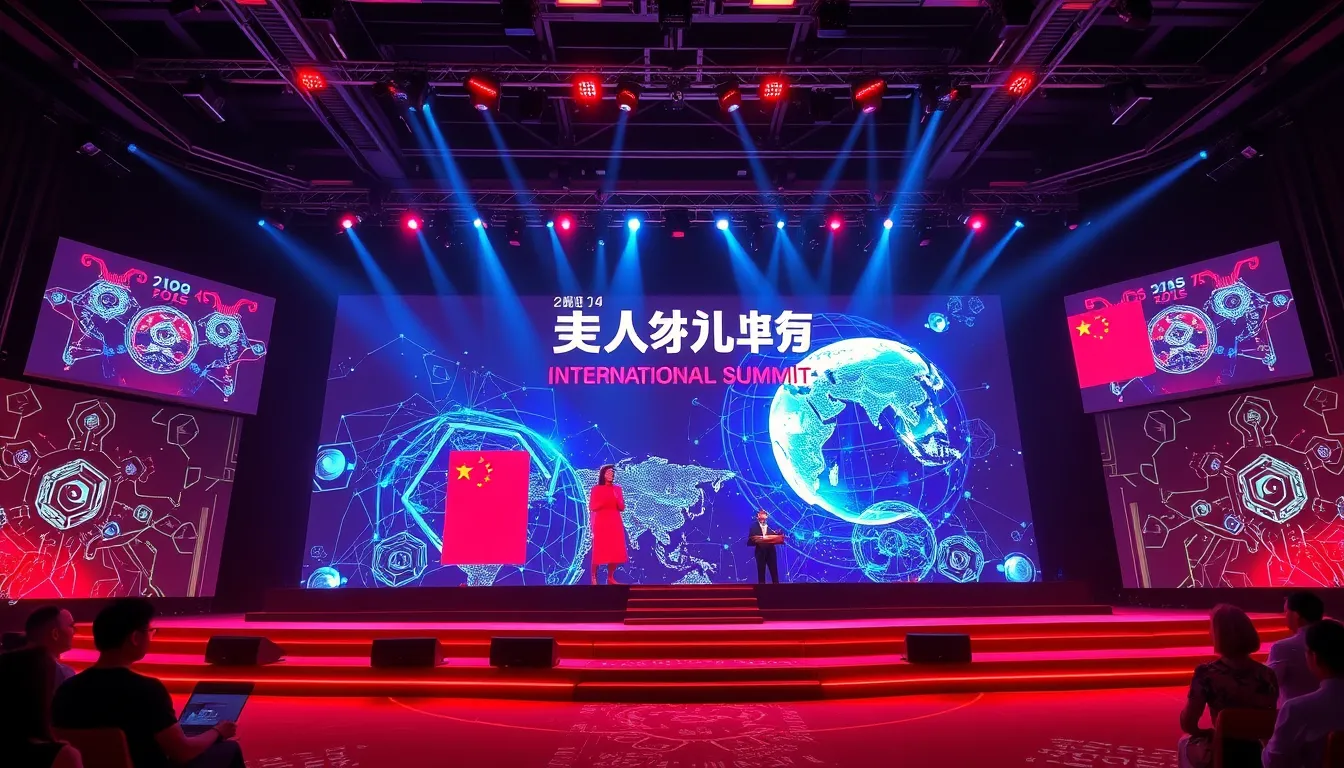Now Reading: China AI Strategy: Balancing Innovation & Regulation Globally
-
01
China AI Strategy: Balancing Innovation & Regulation Globally
China AI Strategy: Balancing Innovation & Regulation Globally

China AI Strategy: Balancing Innovation & Regulation Globally
China is emerging as a central player in the global digital landscape with its bold and comprehensive AI strategy. At a recent international summit, Chinese policymakers, tech experts, and global stakeholders gathered to chart a future where rapid technological innovation is balanced with robust regulatory oversight. This article explores the key aspects of China AI strategy including its approaches to AI innovation, regulatory frameworks, and the integration of advanced technologies across various sectors.
Overview of China’s Bold AI Initiative
The summit was a pivotal moment for unveiling China’s expansive approach toward AI. The event highlighted not only technological prowess but also a determination to strike a balance between accelerating AI innovation and ensuring proper regulation. Chinese officials underscored the need for a robust AI regulatory framework that could foster safe, ethical, and sustainable growth, thereby setting an example for future global policy standards.
Key highlights of the event included:
- A comprehensive strategy to integrate advanced data analytics, machine learning, and autonomous systems into key industries.
- Discussions on balancing AI innovation and regulation, ensuring that both rapid progress and ethical norms are maintained.
- A forward-looking vision focusing on sustainable growth, with special emphasis on how China integrates AI in healthcare and other critical sectors.
How China Integrates AI in Healthcare
One of the most discussed topics at the summit was how China integrates AI in healthcare. With specific case studies and live demonstrations, the event showcased how AI in healthcare is transforming patient care and medical diagnostics. Here are some significant points that were highlighted in this dedicated session:
- Advanced Diagnostic Tools: The integration of AI in medical imaging and diagnostic procedures is enhancing accuracy and speed. This evolution is crucial for early disease detection and better patient outcomes.
- Streamlined Healthcare Services: AI-driven data analytics are being implemented to optimize patient management systems, reduce wait times, and improve the efficiency of healthcare delivery across urban and rural areas.
- Ethical Use and Regulation: The discussions touched on creating a balance between rapid AI deployment and the necessary regulatory controls, ensuring patient privacy and data security are never compromised.
These initiatives exemplify how China leverages cutting-edge technologies to create a more effective and sustainable healthcare ecosystem, demonstrating how AI can be a transformative force in society.
The Role of an AI Regulatory Framework
As China continues to push the frontiers of technological innovation, the development of an AI regulatory framework is paramount. Chinese leaders have passionately argued that a strong and adaptive regulatory system is essential to mitigate risks associated with rapid technological changes. The framework is designed to:
- Establish international standards for ethical AI development and deployment.
- Ensure clear guidelines for data privacy, intellectual property rights, and cybersecurity.
- Foster innovation by providing a regulatory sandbox where new technologies can be tested in a controlled environment.
This dual approach reflects how China is simultaneously nurturing AI innovation while committing to global standards that ensure accountability and trust in digital ecosystems.
Balancing AI Innovation and Regulation
A recurring theme throughout the summit was the need for balancing AI innovation and regulation. Participants from various sectors emphasized that while rapid progress in technology is indispensable, unchecked advancement can lead to significant ethical and security concerns. The core arguments included:
- The necessity of flexible and adaptive regulations that evolve with emerging technologies.
- Encouraging international collaboration to ensure consistent and comprehensive standards in AI governance.
- Highlighting the success of regulatory sandboxes in promoting experimentation while minimizing risks.
AI Governance and Its Global Impact
China’s AI strategy is also deeply rooted in the concept of AI governance. By actively participating in international forums and policy discussions, China is helping to shape the global landscape of AI standards. The nation’s proactive stance includes:
- Investing in cutting-edge research and development to maintain a competitive edge in the AI arena.
- Collaborating with global experts to align ethical guidelines, reducing the friction in international AI adoption.
- Leveraging digital innovation not just for economic growth but as a tool for enhancing national security and global influence.
The discussions during the summit have positioned China as a thought leader in AI governance. The country’s integrated vision is a collaborative initiative that seeks to establish mutual standards and practices, ensuring that technological progress benefits societies worldwide.
Future Outlook and Global Leadership
As the summit concluded, it was clear that China’s approach is both comprehensive and forward-thinking. The strategy is designed not only to promote domestic AI innovation but also to set a precedent in global digital governance. The key takeaways include:
- China’s commitment to transforming local industries through rapid AI integration while balancing risk management.
- The focus on how China integrates AI in healthcare has set a benchmark for other nations looking to modernize their health services.
- A strong emphasis on balancing AI innovation and regulation illustrates a strategic model for managing technological disruptions responsibly.
In conclusion, China’s AI strategy is a dynamic blueprint for the future that navigates the complexities of technological innovation and regulatory oversight. Through initiatives like advanced healthcare integrations and comprehensive regulatory frameworks, China is setting new standards in AI governance. As global stakeholders closely monitor these developments, it is evident that the principles and policies emerging from China will influence AI strategies worldwide. With a focus on sustainable growth and ethical practices, China’s ambitious plan underscores the importance of creating a collaborative international ecosystem that supports both innovation and accountability in the digital age.
For more detailed insights into digital transformation policies and AI governance, readers can refer to additional resources on platforms like the official Chinese government website at https://www.gov.cn.

























